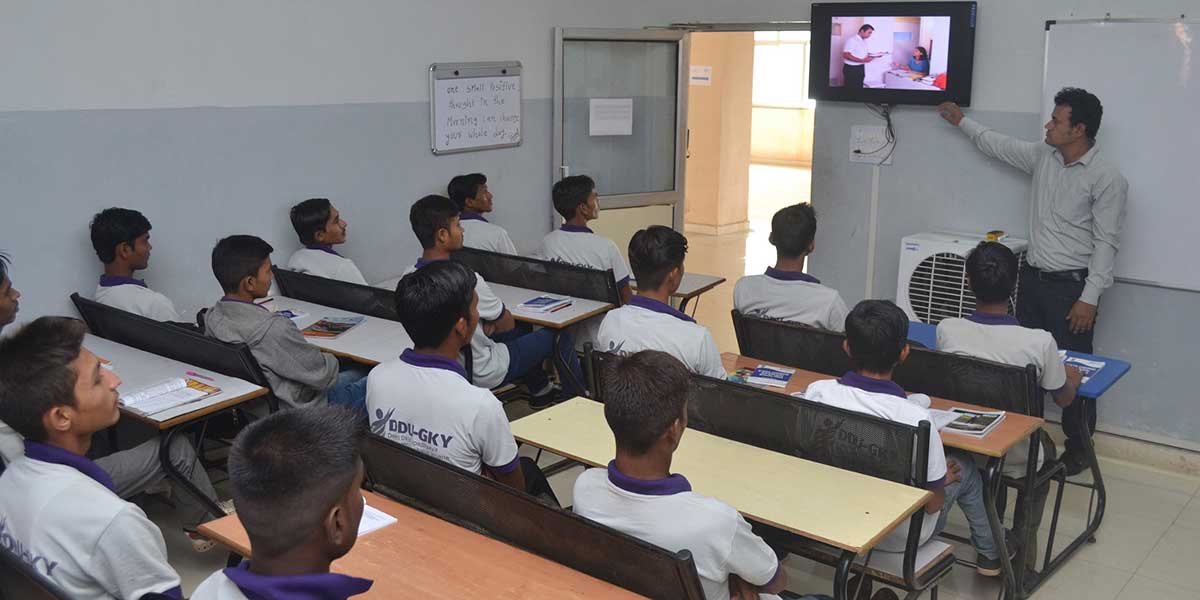A teacher comes in the class, takes attendance, starts the chapter for the day, gives some homework and beats some of the impish students and that’s all for the day. This is how I studied and I am sure most of you of my age group also gone through the same while studying in school, college or any training institute.
Whole world is changing and huge reform is happening at this moment in every domain and field. Technology and particularly Internet is playing a big role to make these changes happen. Everything has changed — the way we book railway ticket, purchase any items, book hotel rooms, travel, order food and the list is endless. We need similar transformation in the education and training sector as well. Things are changing gradually and there is a lot of scope to do and implement for the better.
Technology has become an increasingly essential part of every aspect of work, in every industry, and trainers must keep up with developments in order to bring the benefits to trainees and ultimately make the business profitability.
Let us look at some of the top technology trends taking place in the Training and Development Industry:
Mobile learning
The number of smartphone users in India is estimated to reach 520 million by 2020, with the number of smartphone users worldwide forecast to exceed 6 billion users by that time. This widespread adoption of mobile phones as well as other mobile devices such as tablets, e-readers, etc. is encouraging organizations to leverage mobile learning technologies. Mobile learning enables smaller sized courses to learners without restricting them to a fixed time and place, leading to higher absorption and retention rate of knowledge.
Video-based learning
Newer training technologies, tools, increased network bandwidth, and widespread access to the internet is enabling organizations to create an affordable and advanced video-based training programs, which can be used not just in online courses but in traditional and blended settings as well.
Virtual environment and Avatars
Virtual learning environments bring the social interaction part of traditional classroom training into the E-Learning world. Organizations are using virtual training coach also called avatar, who engages with the learners like a real human being. These are human looking avatars in the form of a cartoon, a 3-D character instructing and engaging with learners during the training process.
Enhanced language and responsive design
Mobile learning is allowing learners to take training courses at any time, from any place and hence it is important for organizations to look into aspects such as user experience, content delivery from mobile point of view. HTML5 is the latest version of HTML, which is accessible on all platforms, devices, and browsers. HTML5 is adaptable and faster, providing the ability to design interactive and engaging learning experiences, without leaving the mobile users behind.
Automation and adaptive Learning
Content providers and Learning Management System providers are using a vast number of automated solutions to create new courses and learning materials, reducing the cost and development time required in the conventional process.
Big data
As more and more learning activities take place digitally, we have more and more data gathered, which can give us hidden insights into our learning process and learner’s behavior. By using external big data analytics tools, which are built into a variety of Learning Management Systems, organizations are getting to know about their learner’s usage patterns, behavior and training courses effectiveness. This is enabling them to create a customized and personalized training courses based on facts and insights.
In order to see the change in each and every individual, we — the trainer — need to change ourselves first. We need to become a SMART trainer. To become a smart trainer we need to follow and act on the following points due-diligently.
· Upgrade ourselves all the time (Remember it’ s changing world, we need to match the pace)
· Equip ourselves with latest technology
· Be smart in Internet Information Search
· Be aware of latest educational apps and tools
· Use Group and Collaborative learning
· Focus on each and every candidates
· Link daily actions with outcomes
· Use innovative methods in training delivery
All these are possible, when we come out of the conventional method of teaching and training the candidates and use all the above points effectively. New tools such as social networking and web 2.0 applications are proven to facilitate collaboration and knowledge-sharing before, during and after courses. They can encourage reflective learning, iterative developments in training, implementation of tips and techniques learnt and reinforce information gained in the sessions.
A number of Course Management Systems now include web 2.0 applications such as blogs, quizzes, forums and wikis as well as links to files and webpages. Currently a significant number of CMS are seen primarily as repositories for content rather than being used to their full potential, but the next phase will certainly be to embrace these additional options.
The great writer and educationist Rabindranath Tagore did it in 1920 when he led the opening program of the School of Wisdom. Where he took the students out of the classroom for most of the practical sessions and also used group learning and collaborative learning.
Technologies influence on Training and Learning and have made it possible to reduce the costs associated with delivering training, increase the effectiveness of the learning environment, help training contribute to business goals. New technologies include Multimedia, Distance learning, Expert systems, Electronic support systems, and Training software applications.
Technology have made several benefits possible — Trainers can gain control over when and where they receive training, Trainers can access knowledge and expert systems on an as-needed basis, Employees can choose the type of media (print, sound, video) they want to use in a training program, Course enrollment, testing, and training records can be handled electronically, reducing the paperwork and time needed for administrative activities, Trainees accomplishments in training in progress can be monitored, Traditional training methods can be delivered to trainees rather than requiring them to come to a central training location.
MindScroll, a new age learning and assessment platform, can provide complete solutions to the online training delivery and help you to manage content and assessments. It helps you in group and collaborative learning by providing option to upload content and create courses in minutes and to choose from self-paced, instructor-led, or blended course. It has support to upload documents, pdf, power-point, audio files, videos, SCORM, and web links. It can be organize and reuse files from content library.
MindScroll also provides platform to create assessments and surveys easily using advanced Test Engine. The test engine supports for multiple question types — MCQ, MMCQ, T/F, Free Text, File upload. It also has feature to bulk upload questions to form a question bank. A certification Exams can also be conducted and certificate can be generated using custom template.
Do you think you are all set to become a SMART trainer and ready to change the world — One by one and everyone?
LMS, Learning Management System, Cloud LMS, Learning Technologies, Mobile Learning, MLearning, Live Teaching, Digital Learning Tools, Emerging Tech




